The Vikings, the seafaring Norse pirates and traders from the Scandinavian region, left an indelible mark on history, particularly European history, as they raided, looted, pillaged, and conquered. Between the 8th and 11th centuries, they traveled to the Mediterranean, North Africa, Bulgaria, Western Asia, and were the first Europeans to reach the Americas (North America’s Newfoundland). In a recent historical examination of the Vikings, a growing focus has emerged on understanding the domestic society and lifestyle of the Vikings (or more correctly, Norse people) not just their travels abroad.
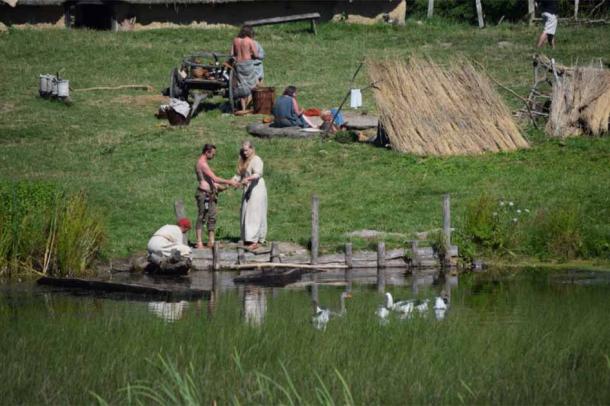
Everyday Viking life could be quite pastoral and relaxing ( Public Domain )
Daily Viking Life on the Farmstead
Could the Vikings have sustained a nearly four century-long empire through just loot and pillage? The answer is a firm no. Norse society was organized primarily around agriculture, with most Norse men being farmers who grew barley, oat, rye, wheat, and grain. Some women tended vegetable gardens, or participated in the apple orchards, though these were less common. Plowing, sowing the crops, and harvest were in strictly seasonal cycles.
Viking life also included domesticated animals like pigs, sheep, goats, and chickens, which served as a secondary occupation. The Vikings were adept horse riders , with remains of stables found throughout Scandinavia. Severe winters meant that farmers had to keep cattle inside during the cold, for which enough hay had to be grown and stored through the rest of the year.
Viking families would sustain themselves on what they produced on the farm, along with whatever could be hunted, fished, or gathered. The farms were not large and widely spread out, but had the ability to keep all members well-fed, sometimes even during a lean harvest year. On a typical day, two meals would be eaten – the day meal, or ‘ dagmal’, would be served an hour after waking up, and the night meal, or ‘ nattmal’, eaten after the working day.
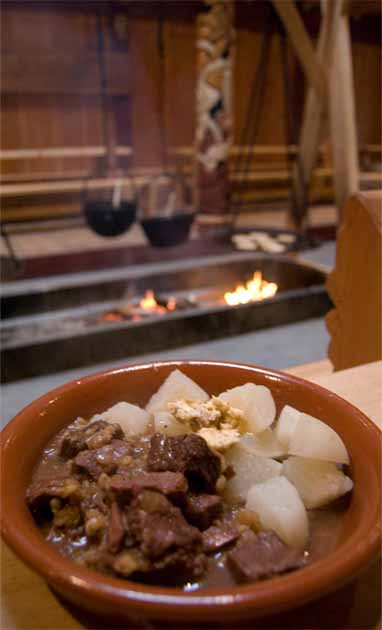
Viking food: beef cooked in beer, served with turnips and hazel butter. From a venue at the Viking longhouse at Stiklastadir, Trøndelag, Norway (Vrangtante Brun / CC BY NC 2.0 )
Particularly during cold weather, the nattmal would be a vegetable or fish broth or stew prepared in a cauldron, which would sometimes be eaten the next morning at the dagmal with bread and fruit. Children would eat porridge, dried fruit, buttermilk, and bread, depending on seasonal availability and the family’s socio-economic status.
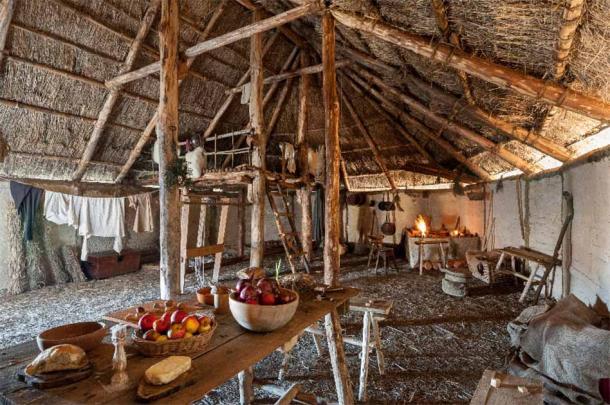
Typical Viking longhouse interior ( Federico Magonio / Adobe Stock)
Viking Domestic Life at Home
Since most Norse families were farmers, only a minority would live in towns, with the concentration in the rural hinterland. Farming communities generally lived in hall-like houses 10 to 100 feet long (3 to 30 meters), in small villages in the countryside near fjords, or in desolate valleys that lay further inland. Farms were generally placed on a hilltop with a good view of the surrounding area to see who was coming – friend or foe.
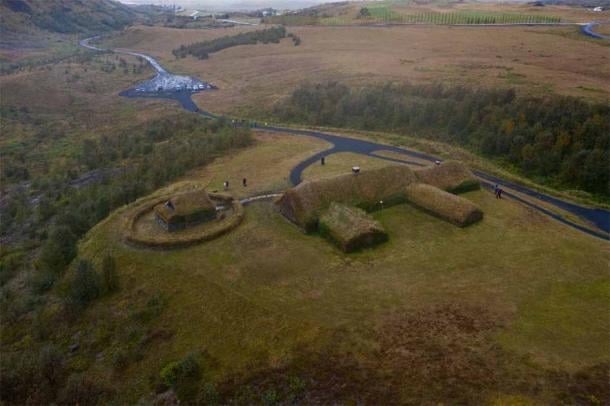
Typical Viking home, Iceland ( Сергей Вовк / Adobe Stock)
Wealthier farmers would live in large houses up to 250 feet (76 meters) long! Typically, Viking houses had only one room, with an opening in the ceiling for smoke ventilation. Due to a misrepresentation of Vikings in popular culture, there is a sense that their spaces were grand and luxurious, but this was only true of a few affluent members.
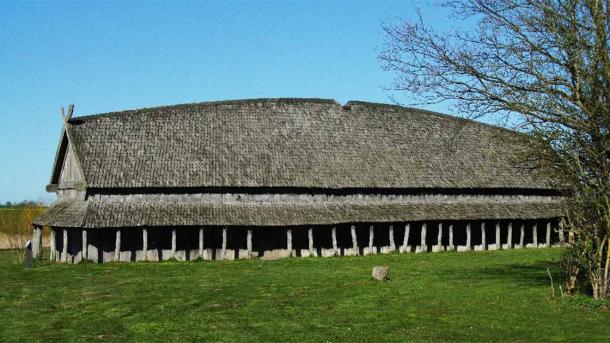
A reconstructed Viking longhouse (Jens Cederskjold / CC BY 3.0 )
In fact, many families slept in the same open room as their livestock, and it was only if they had enough floor space to split the room into two, that the animals would be in a separate space.
Vikings from present-day Norway built their homes from wood, although mud, stone and a mixture of these materials were more common for Viking houses outside Norway. When the Norwegian Vikings had access to what is called stave-construction technology, the walls would be upright planks side by side, with ends sunken into the ground. Along these walls, benches would be located for sitting or sleeping, covered with fur or cloth. The fireplace provided both warmth and light, although sometimes lamps fueled with wax or blubber were also used.
For water, the more well-off families had direct pipelines running into the house, directed from a river or a pond into a small channel running underneath the house. This channel was covered by slabs of rock, and to access the water, one had to merely lift one of the rock slabs. There was typically a separate bath house, which was accessed every Saturday, the regular bath day. Those who lived near the coast had boathouse as well, called ‘ naust’, for ships and smaller boats.
In terms of Scandinavian village size, a single village generally consisted of 15-50 farmsteads. There were a handful of trade towns of merchants and craftspeople that were slightly bigger; however, population wise, only 1-2% of the population lived in those towns.
Geography played a major role in population distribution. The most remote villages were generally characterized by fjords, mountains, forests, and other challenging topographies. There, since farming and settlement were very difficult, and also vulnerable to nature’s extremities, lone farmsteads were also common. The edge of most settlements featured cemeteries; the burial of an ancestor created greater claim over the land being worked upon by their descendants.
Horses were used as transportation overland, for both humans and goods. Carts and wagons were also put to good use. However, during winter, in the areas permanently under frost, skis were used, along with sleds pulled by horses, who had special spiked footwear to cross both snow and frozen bodies of water.
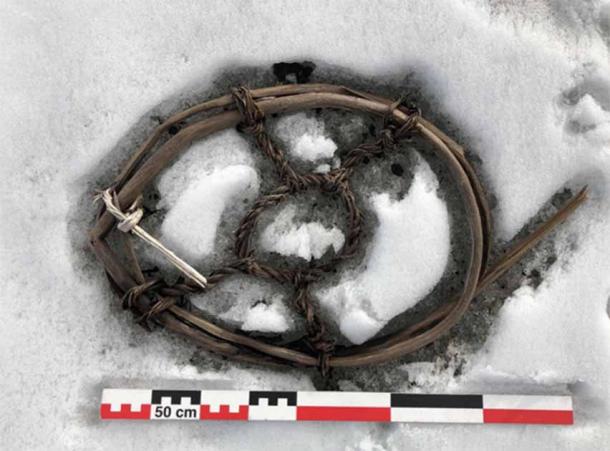
Viking age horse snowshoe made of birch ( Espen Finstad /secretsoftheice.com)
Women in the Viking Age: Marriage and Status
Social theorists often comment that a society’s progress is judged by the way its women are treated. The majority of Viking women were housewives, who were part of families with warriors in them. Not only were they in charge of domestic responsibilities around the clock, but the moment their husbands or sons would leave for looting expeditions, they had to take over the control of the public responsibilities too. This could be a variety of responsibilities around the farm with respect to sowing and harvest, or in small production units like textiles.
Although we see some equality in Viking society on gender issues, certain glaring inequalities existed. For example, men were the only ones allowed in court; a woman’s word was believed to be truthful in the worst of scenarios. Additionally, like in other patriarchal societies, a woman was considered part of ‘her family’ until she was married, and then became a part of ‘his family’ after marriage.
When a man asked for a woman’s hand in marriage, the parents were involved as well. They would look at the story of the sagas, and accordingly, hand over the daughter to the proposer. She was given virtually no agency in exercising her rights in love or deciding a partner. The Norse sagas would encourage young women to compete over the most ‘eligible’ husband – it comes as no surprise that these sagas were authored by men!
While Viking women were allowed to get divorced on certain grounds, infidelity was not one of them. Men could bring multiple mistresses home, while female infidelity was severely punished. If a man hit a woman three times, she could ask for divorce. If he left her and went to another town, she could ask for divorce on the grounds of loneliness. However, it must be noted that Viking women could be married to another man.
[embedded content]
These are some of the glimpses we have of Viking life and times – a society that was based on sedentary agriculture, rather than the brash adventurism and pillaging associated with them in popular culture.
Top image: Viking woman enjoying daily pastoral life on the homestead. Source: selenit / Adobe Stock
By Sahir Pandey
Related posts:
Views: 0
 RSS Feed
RSS Feed

















 September 21st, 2022
September 21st, 2022  Awake Goy
Awake Goy  Posted in
Posted in  Tags:
Tags: 
















